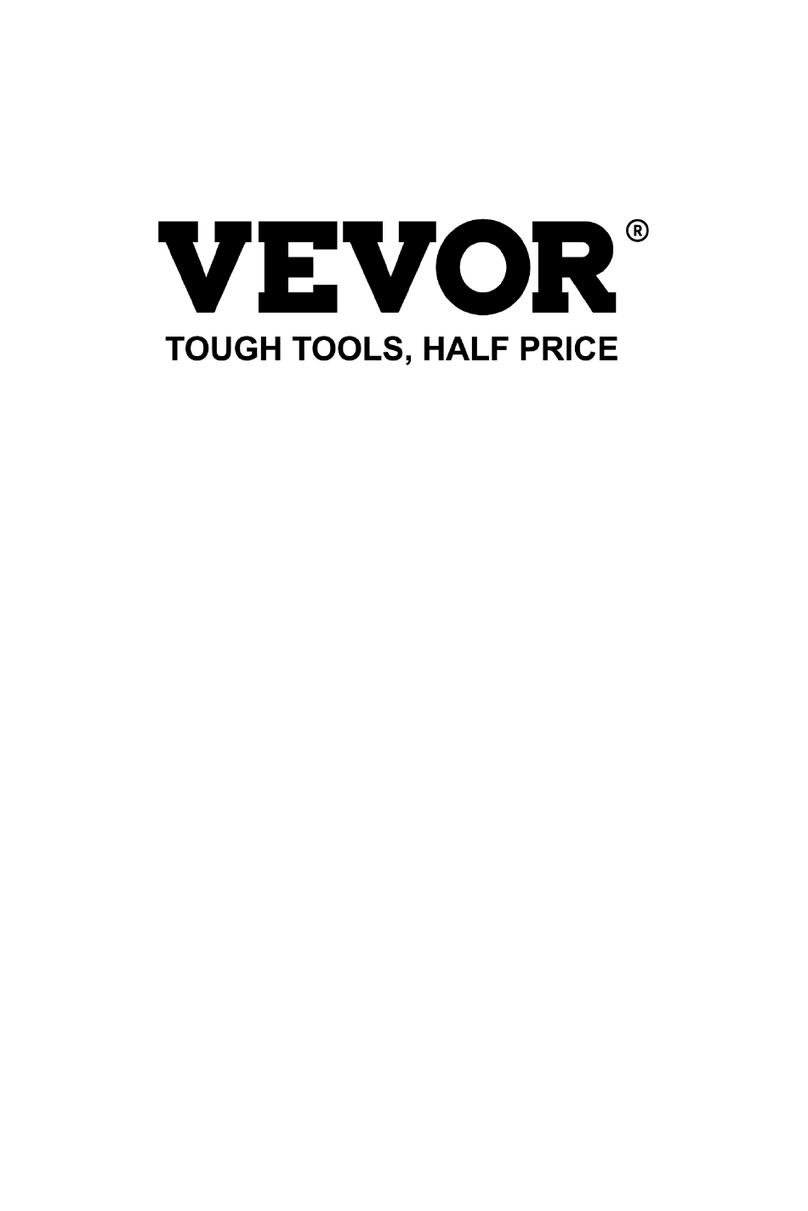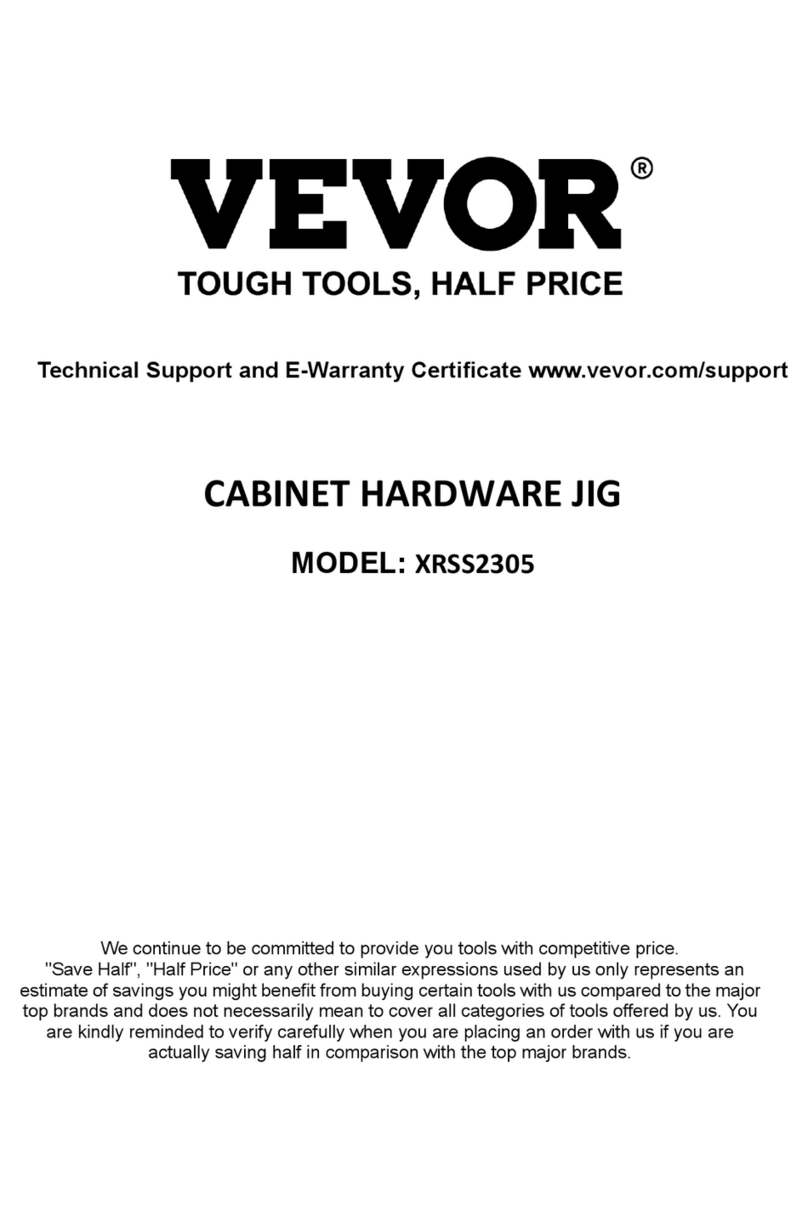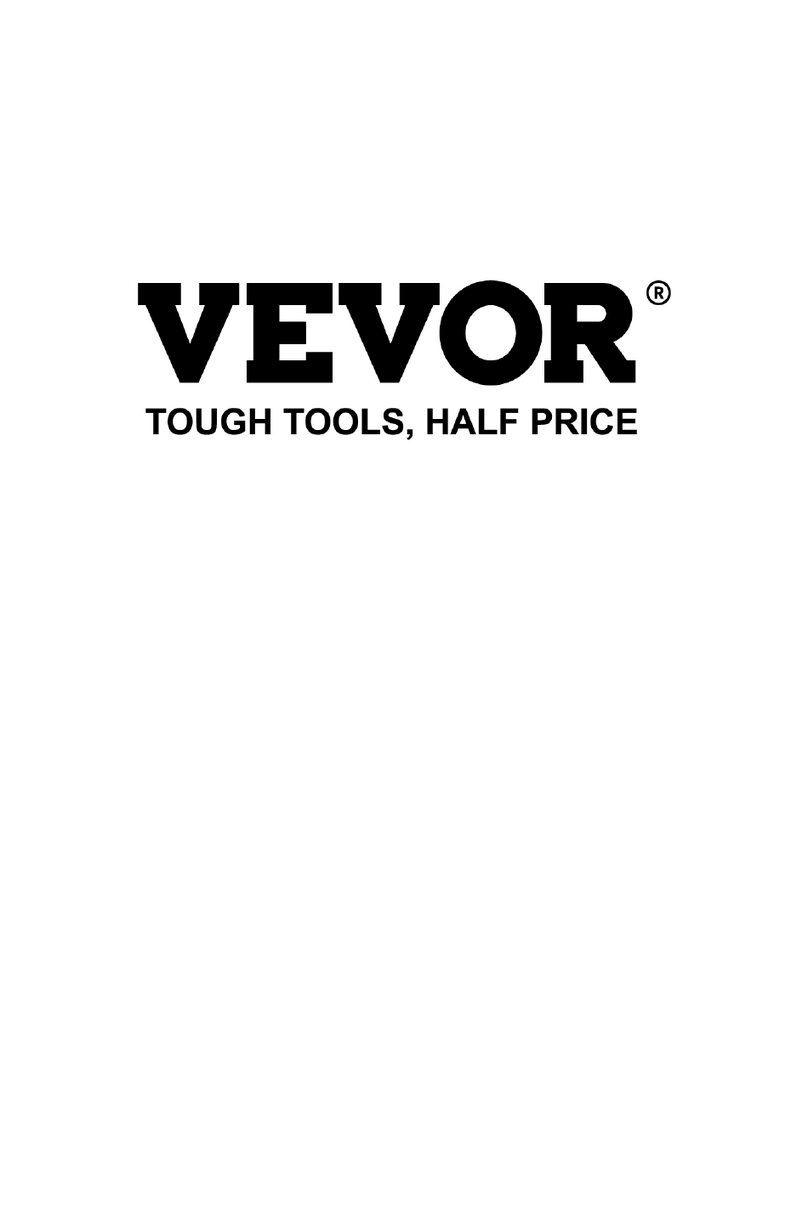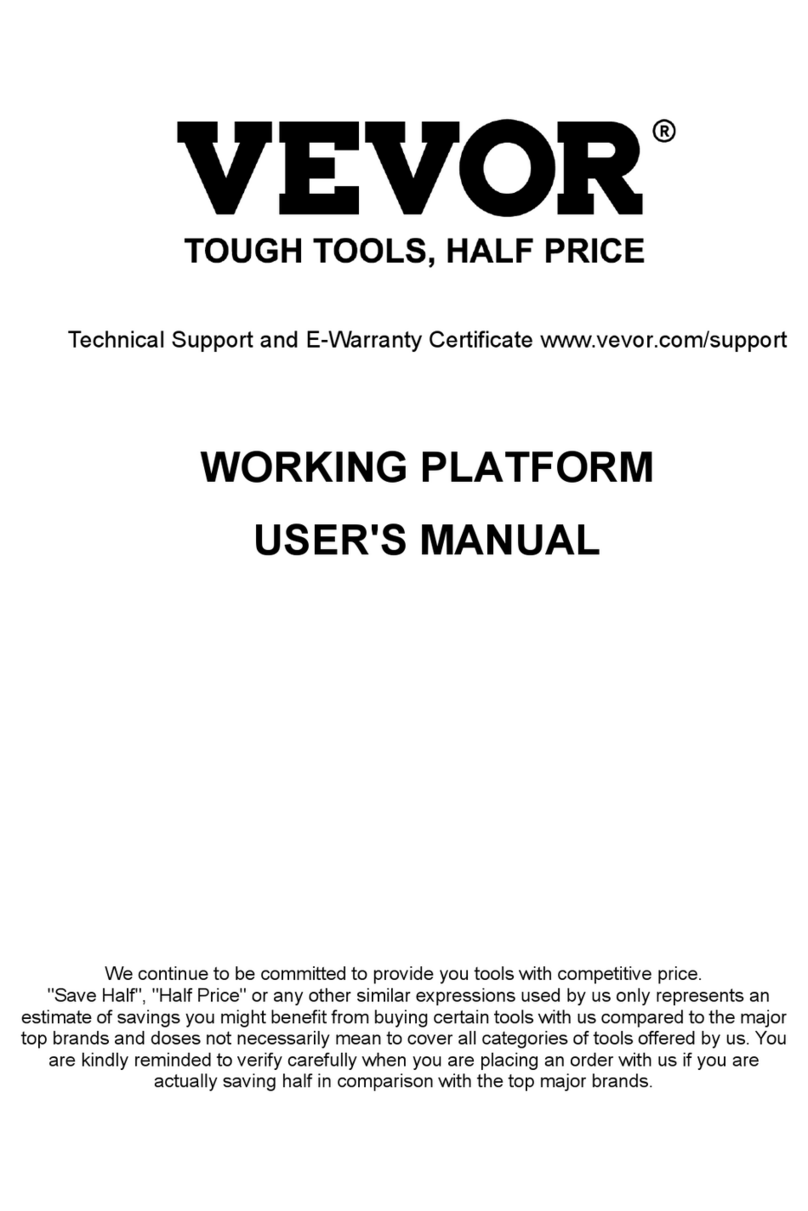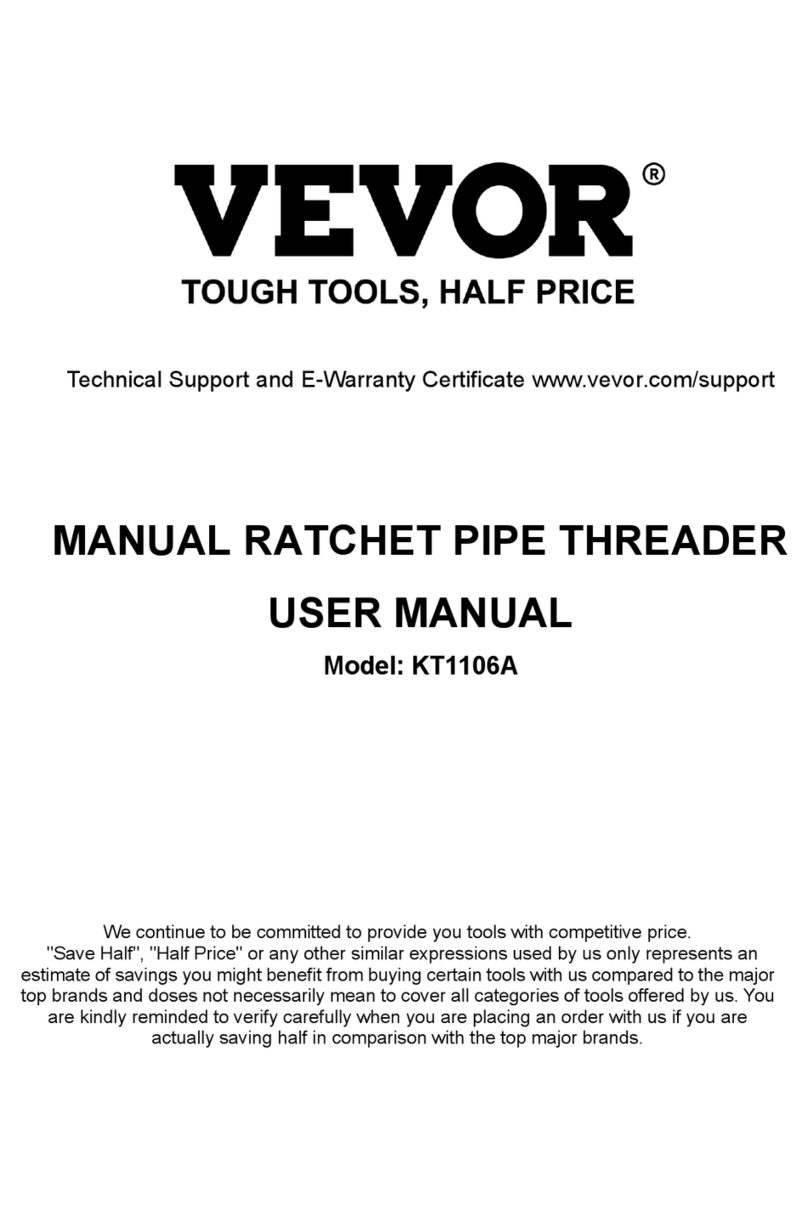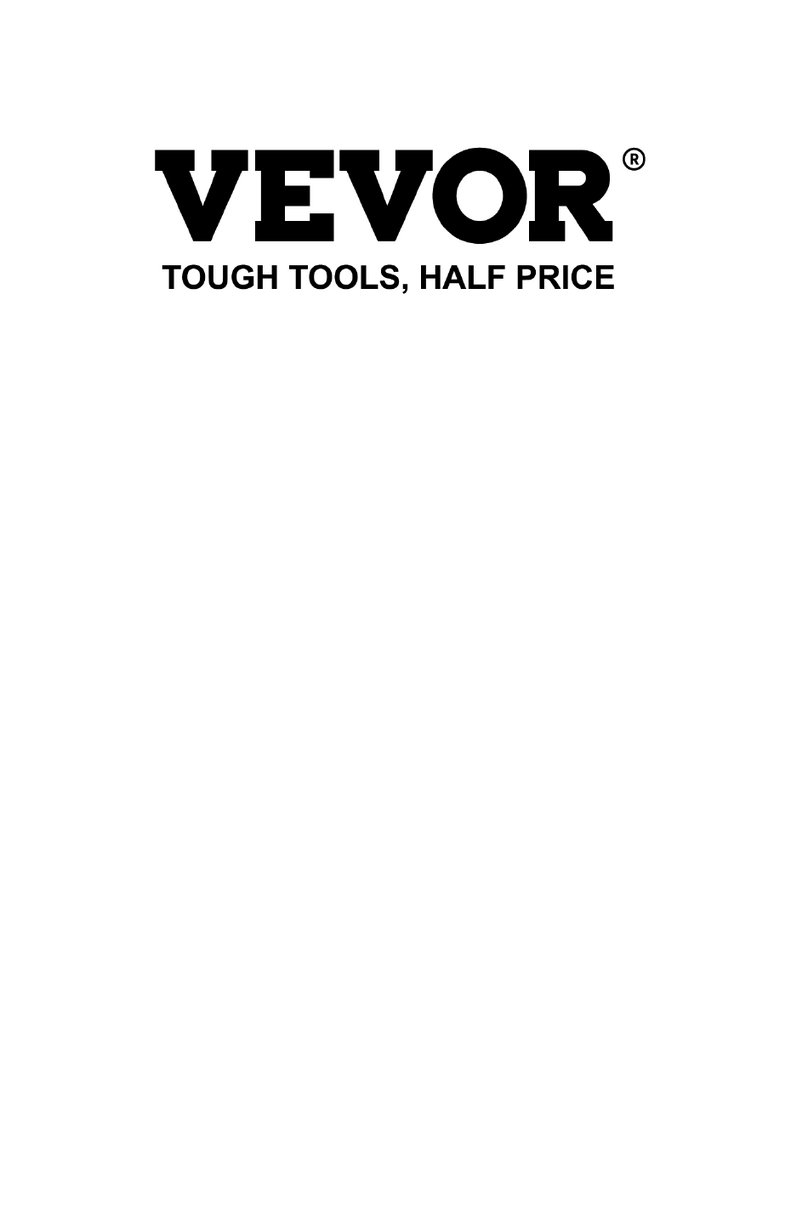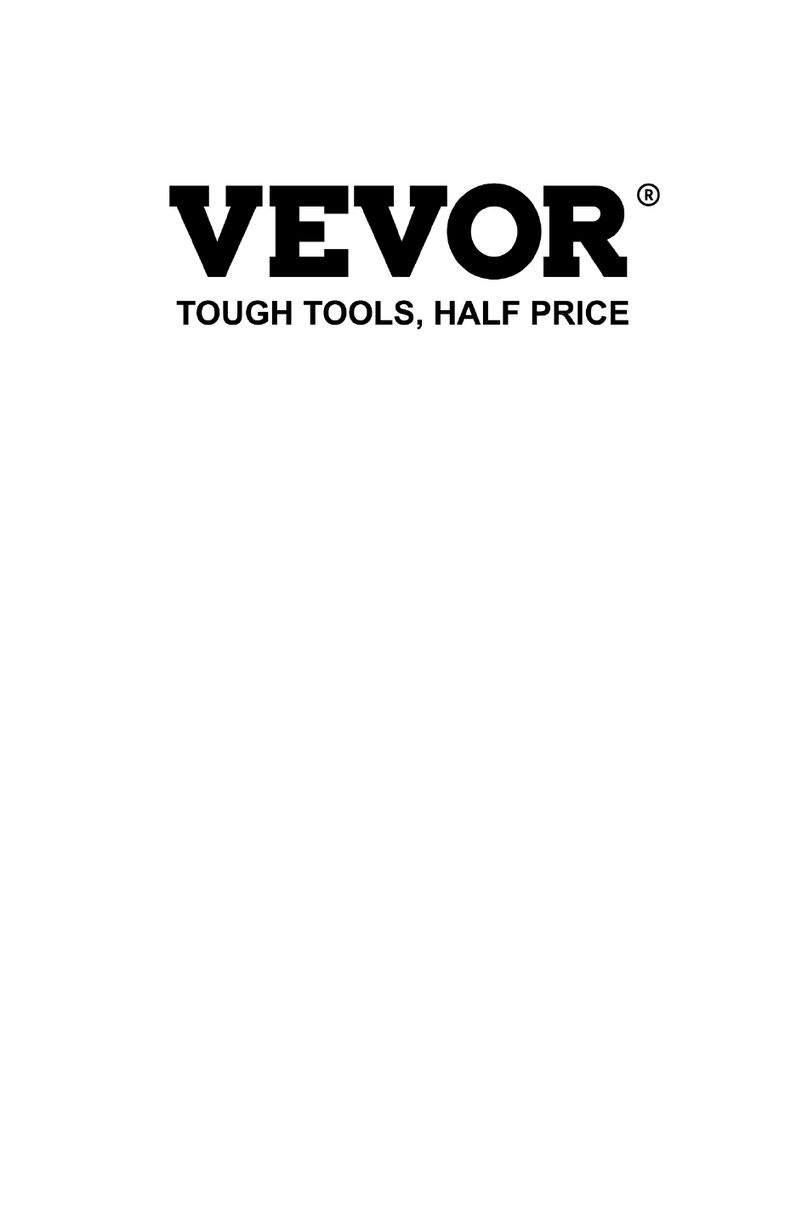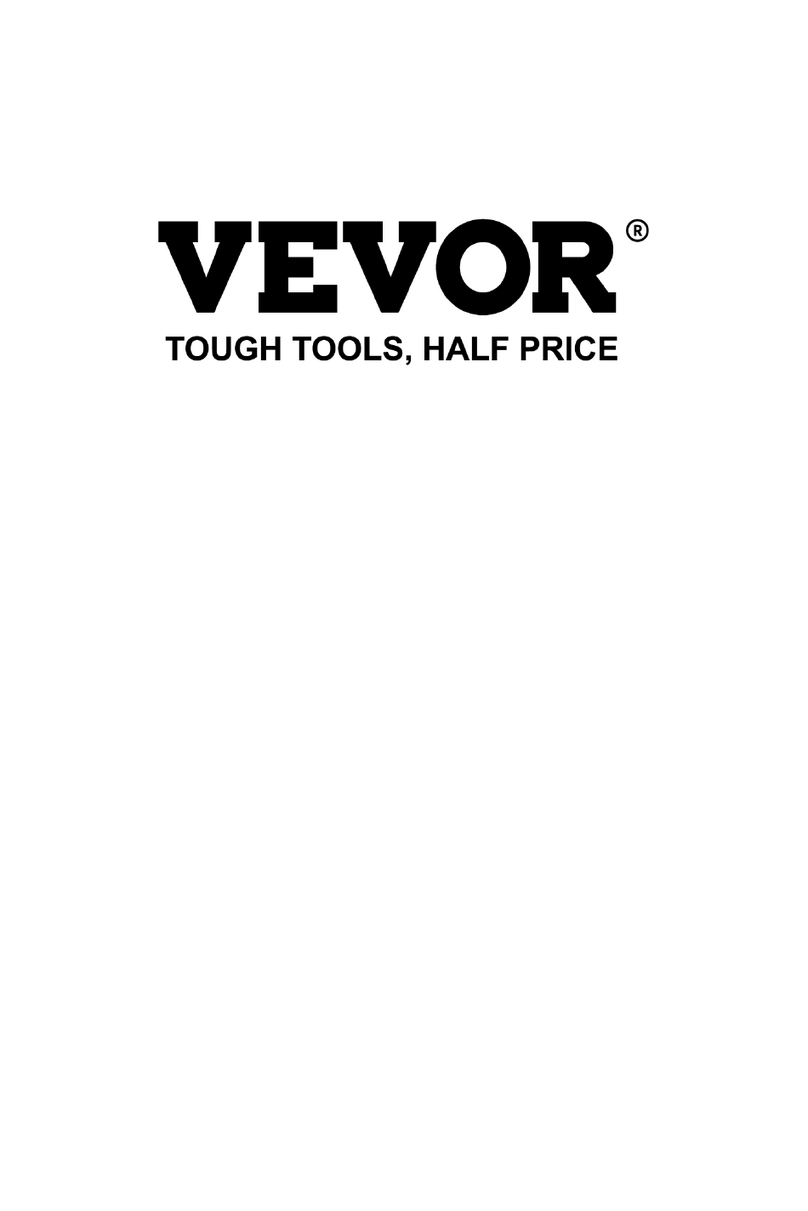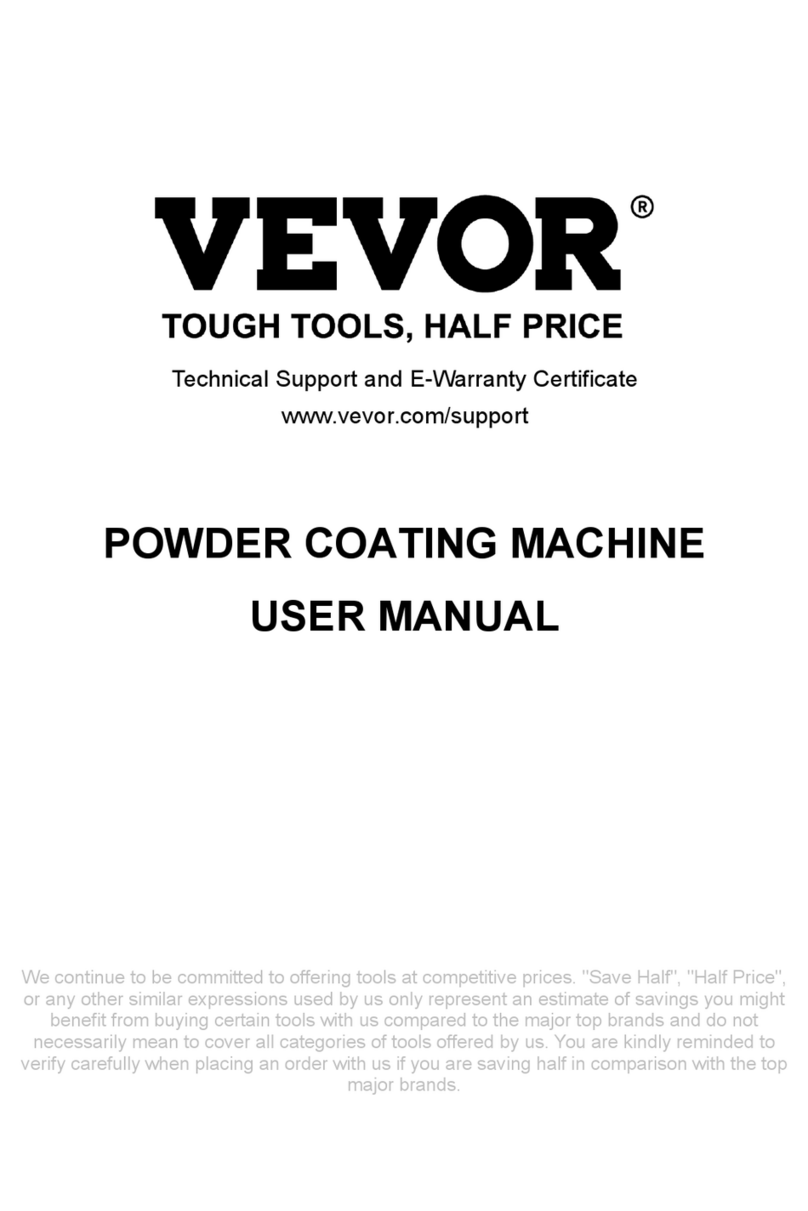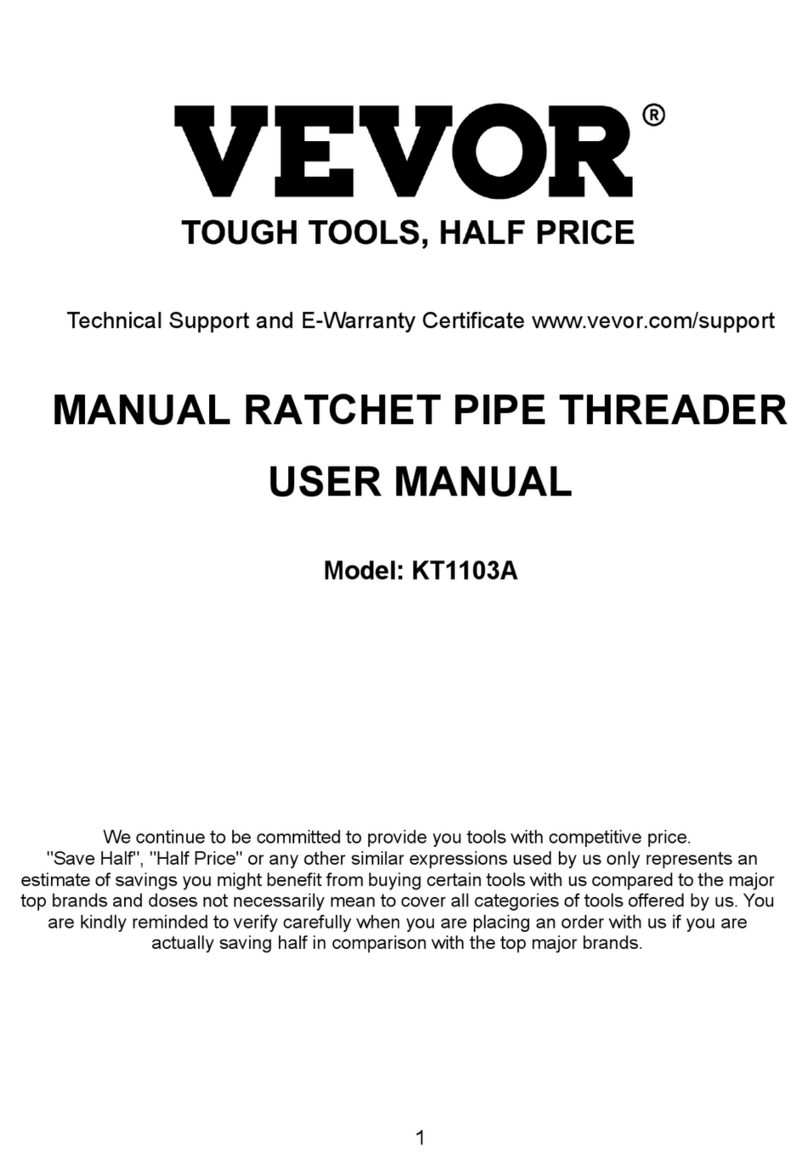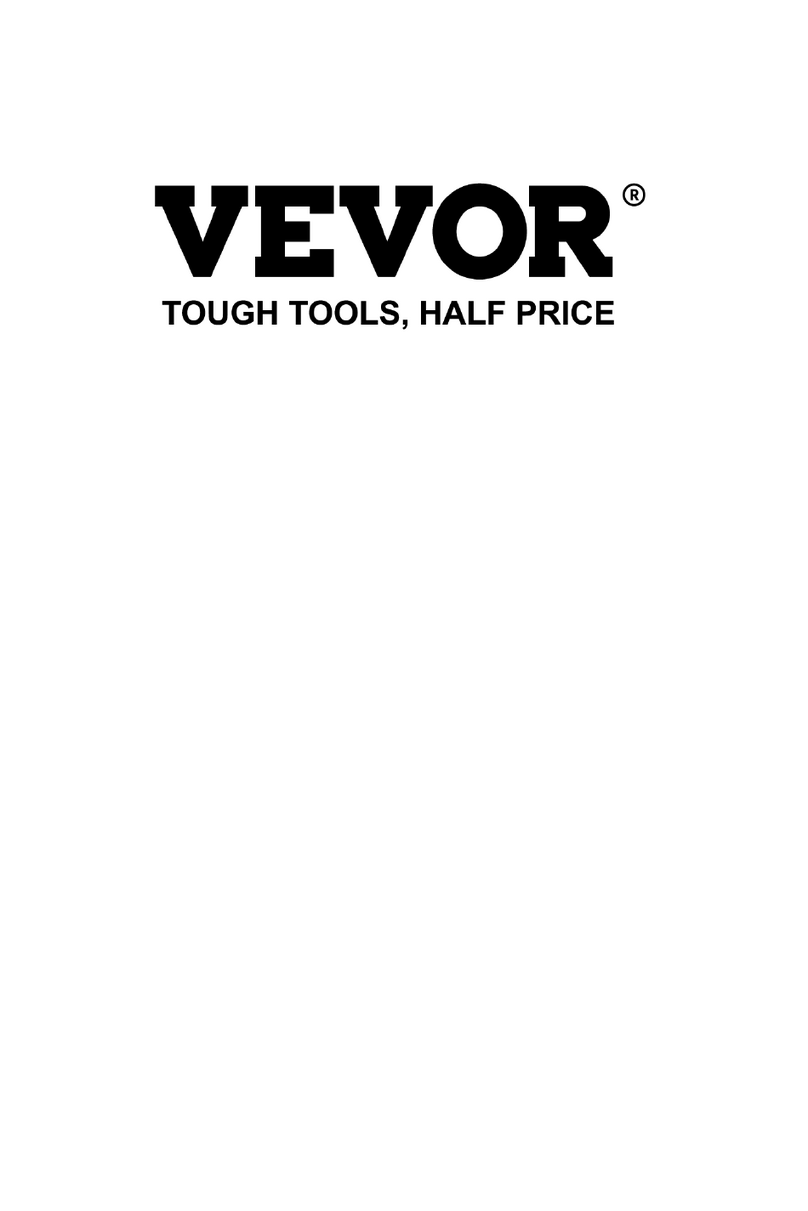
c) Always use protection means (accident-prevention shoes, etc.)
Do not forget that there are always crushing risks!
d) Lock the safety rods on articulated vehicles.
e) Safety valve is set and sealed by the manufacturer.
It is absolutely forbidden to tamper with it and change its calibration.
The INCOMPLIANCE or these INSTRUCTIONS can cause damages
and/ or breakage to the BEAD BREAKERS with consequent damages
to persons and things.
MAINTENANCE
Check the tools before their use. In case of oil leaks, replace the
seals.For pump maintenance,see its instruction manual.
CHECKS
a ) Check the tools before their use. In case of oil leaks, replace the seals.
b) Inspect hoses and connections daily.
c) Tighten connections as needed. Use non-hardening pipe thread
compound when servicing connections.
d ) Use only good quality hydraulic fluid. We recommend Mobil DTE
13M or equivalent for the air hydraulic pump.
● When not in use or during storage:
1. Depressurize and disconnect hydraulic hoses from application.
2. Wipe clean, thoroughly.
3. Store in clean, dry environment. Avoid temperature extremes.
4. Shield pump with a protective cover.
●Adding Hydraulic Fluid
1. Depressurize and disconnect hydraulic hose from application.
2. With pump in its upright, horizontal position, remove the oil filler plug
located on the top plate of the reservoir.
3. Use a small funnel to fill reservoir to within 3/4"(19mm) of the opening.
Note: Use only good quality hydraulic jack oil.


